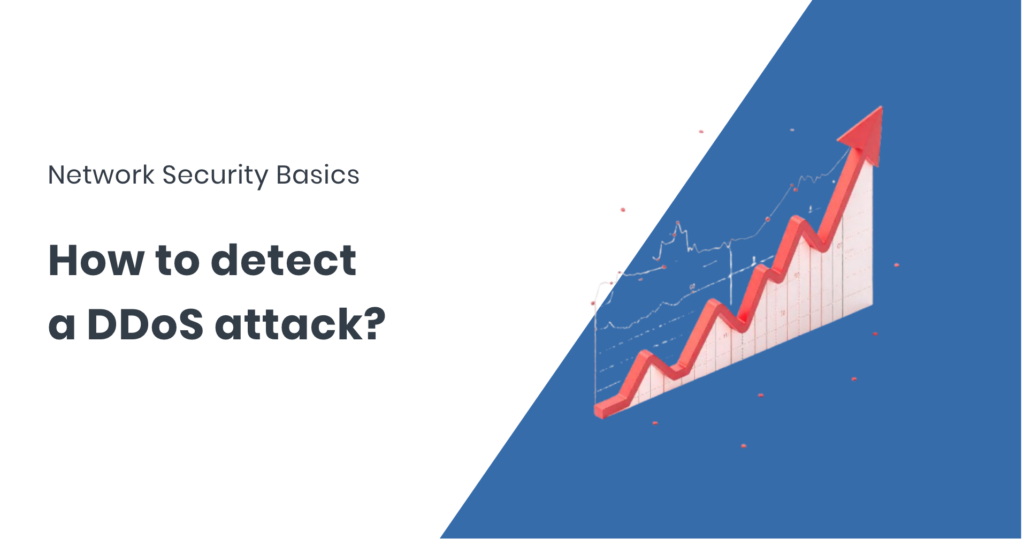DDoS attacks remain one of the most disruptive threats facing ISPs, backbone networks, hosting providers, and enterprises. Detecting the attacks quickly is essential to keeping networks stable and services running.
This guide looks at how network engineers can recognise the signs of an attack and how FastNetMon provides the visibility needed to detect them in real time.
Recognising the signs of a DDoS attack
DDoS attacks can appear similar to ordinary traffic peaks at first glance, but they leave distinct technical fingerprints across the network stack.
Transport-layer anomalies
Many large-scale attacks exploit the TCP handshake. For example, a SYN flood sends large numbers of half-open connections that fill backlog queues. Engineers should watch for:
- A spike in flows with the SYN flag set but no corresponding ACK.
- Abnormal flag combinations such as SYN+FIN or repeated RST floods.
- Reduced source IP entropy, suggesting many spoofed IPs hitting one target.
Bandwidth and packet floods
Floods can saturate either by sheer bandwidth or by overwhelming devices with packets per second (PPS). Indicators include:
- A sharp increase in bits per second (BPS) showing volumetric floods.
- A PPS surge from small UDP or ICMP packets, even when bandwidth does not grow equally.
- Rapid rises in flows per second, with shrinking flow sizes that look more like scanning than real traffic.
Server and application strain
On servers and load balancers, backlogs and connection tables expose the impact quickly:
- SYN backlog queues fill, leading to dropped connections.
- If SYN cookies are enabled, CPU usage climbs as the system works harder to validate connections.
- Logs show incomplete TCP handshakes, repeated abnormal HTTP requests, or floods of identical GET/POST requests.
Network and service disruption
As traffic pressure mounts, the attack often spills over into wider service disruption:
- Routers and switches show queue drops, buffer overruns, and CRC errors.
- Firewalls see CPU interrupts spike.
- Services like VoIP degrade with jitter, VPN sessions disconnect, and web services return errors.
Correlation matters
No single symptom confirms an attack. Engineers rely on correlation:
- Flow data shows anomalies.
- Router counters confirm congestion.
- Server logs highlight incomplete sessions.
- Service monitors flag user-visible impact.
Building a baseline of normal behaviour is critical. Once you know what “normal” looks like for your traffic, deviations stand out clearly.
How FastNetMon detects attacks
Detecting attacks manually is time-consuming and error-prone. FastNetMon Advanced automates this process by ingesting traffic telemetry (NetFlow, IPFIX, sFlow, or mirrored packets) and keeping per-host, per-subnet, and per-hostgroup counters. Configurable thresholds help distinguish between normal surges and malicious floods, and once an attack is detected, FastNetMon can trigger mitigation automatically through BGP FlowSpec or Remotely Triggered Black Hole (RTBH) routing.
Key signals and how FastNetMon detects them
| Signal | What it looks like in an attack | How FastNetMon detects it |
|---|---|---|
| SYN floods | High SYN-to-ACK ratio, incomplete handshakes, unusual flag combinations | Dedicated SYN PPS counters and SYN bandwidth tracking |
| Bandwidth spikes | Sudden surge in Mbps, often saturating links | Per-host, per-hostgroup, and global bandwidth thresholds |
| Packet floods | Excessive PPS from small UDP/ICMP packets | PPS counters by protocol and global PPS monitoring |
| Flow anomalies | Many short-lived flows per second | Flows-per-second counters |
| Fragmentation | Spoofed or fragmented packets to bypass filtering | Fragmented packet counters |
| Service-wide attacks | Carpet bombing across subnets | Hostgroup and global thresholds to spot distributed floods |
| Routing anomalies | Triggered RTBH or FlowSpec routes | Integration with BGP Blackhole and FlowSpec for automated mitigation |
Going deeper: FastNetMon in practice
FastNetMon’s detection workflow mirrors an engineer’s investigative process, but at machine speed:
- Collect: It ingests flow data from routers or mirrored packets from taps.
- Measure: Counters track bandwidth, PPS, and flow creation rates per host and group.
- Detect: When thresholds are exceeded, FastNetMon marks an event as a potential attack.
- Confirm: Engineers can drill into packet captures or logs to validate if needed.
- Mitigate: With BGP integration, mitigation can be triggered automatically.
This combination of telemetry, thresholds, and automation means FastNetMon doesn’t just alert engineers — it gives them the tools to respond in time.
Conclusion
Recognising a DDoS attack comes down to spotting patterns of anomalies across flows, protocols, routers, and services. Doing it by hand takes time, and during an attack, time is the one thing you don’t have.
FastNetMon helps by automating detection, correlating signals across the network, and integrating directly with routing controls to enable fast mitigation. For ISPs, hosting providers, and enterprises alike, it provides the visibility and speed needed to protect infrastructure from today’s increasingly complex attack landscape.
About FastNetMon
FastNetMon is a leading solution for network security, offering advanced DDoS detection and mitigation. With real-time analytics and rapid response capabilities, FastNetMon helps organisations protect their infrastructure from evolving cyber threats.
For more information, visit https://fastnetmon.com

